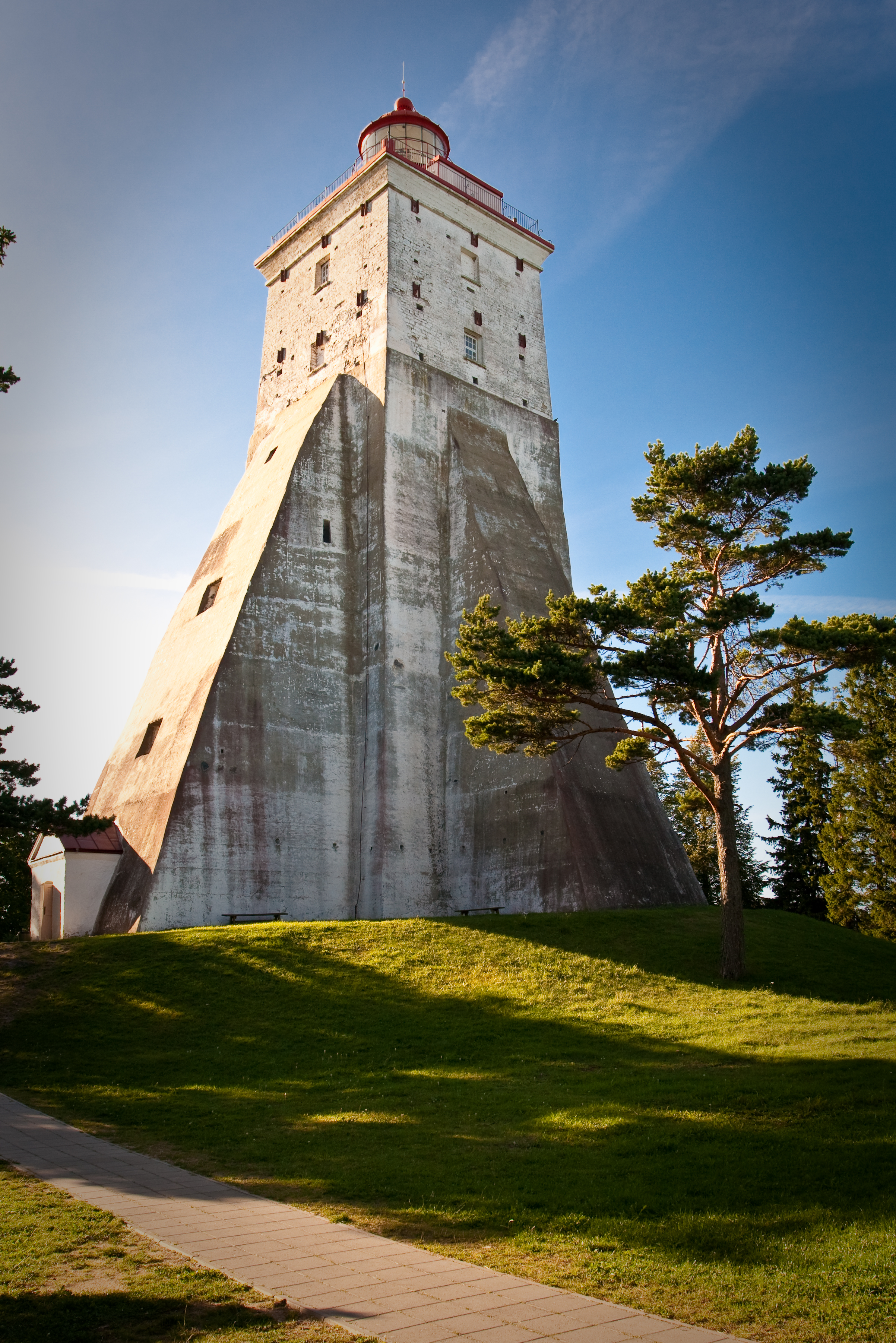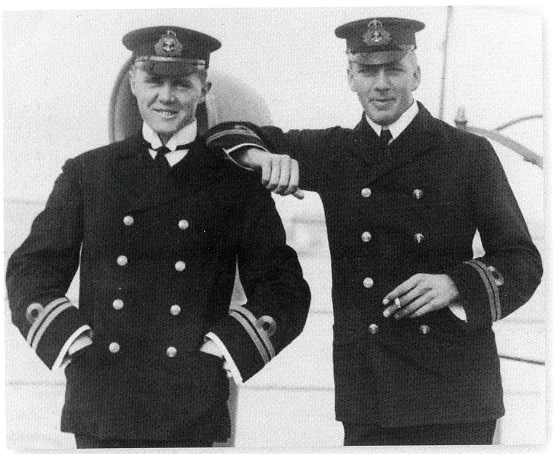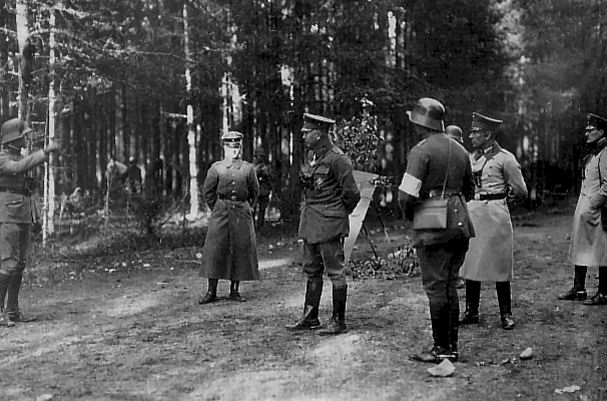|
British Submarine Flotilla In The Baltic
A British submarine flotilla operated in the Baltic Sea for three years during the First World War. The squadron of nine submarines was attached to the Russian Baltic Fleet. The main task of the flotilla was to prevent the import of iron ore from Sweden to Imperial Germany. The success of the flotilla also forced the German Navy in the Baltic to keep to their bases and denied the German High Seas Fleet a training ground. The flotilla was based in Reval (Tallinn), and for most of its career commanded by Captain Francis Cromie. The flotilla originally consisted of six E-class and five C-class submarines. The smaller C-class submarines reached the Baltic Sea from the White Sea via northern rivers; the long-range E-class submarines managed to enter the German backwaters by passing undetected through the narrow and shallow Danish Straits. Two submarines were lost to stranding and one went missing, now presumed sunk by a mine. In 1918, the German occupation of Tallinn and the Br ... [...More Info...] [...Related Items...] OR: [Wikipedia] [Google] [Baidu] |
HMS E18
HMS ''E18'' was an E-class submarine of the Royal Navy, launched in 1915 and lost in the Baltic Sea in May 1916 while operating out of Reval. The exact circumstances surrounding the sinking remain a mystery. The wreck of the submarine was discovered in October 2009. Design Like all post-''E8'' British E-class submarines, ''E18'' had a displacement of at the surface and while submerged. She had a total length of and a beam of . She was powered by two Vickers eight-cylinder two-stroke diesel engines and two electric motors.Akerman, P. (1989). ''Encyclopaedia of British submarines 1901–1955''. p.150. Maritime Books. The submarine had a maximum surface speed of and a submerged speed of . British E-class submarines had fuel capacities of of diesel and ranges of when travelling at . ''E18'' was capable of operating submerged for five hours when travelling at . As with most of the early ''E'' class boats, ''E18'' was not fitted with a deck gun during constructio ... [...More Info...] [...Related Items...] OR: [Wikipedia] [Google] [Baidu] |
Finnish Civil War
The Finnish Civil War; . Other designations: Brethren War, Citizen War, Class War, Freedom War, Red Rebellion and Revolution, . According to 1,005 interviews done by the newspaper ''Aamulehti'', the most popular names were as follows: Civil War 29%, Citizen War 25%, Class War 13%, Freedom War 11%, Red Rebellion 5%, Revolution 1%, other name 2% and no answer 14%, was a civil war in Finland in 1918 fought for the leadership and control of the country between White Finland and the Finnish Socialist Workers' Republic (Red Finland) during the country's transition from a grand duchy of the Russian Empire to an independent state. The clashes took place in the context of the national, political, and social turmoil caused by World War I ( Eastern Front) in Europe. The war was fought between the "Reds", led by a section of the Social Democratic Party, and the "Whites", conducted by the conservative-based senate and the German Imperial Army. The paramilitary Red Guards, which were co ... [...More Info...] [...Related Items...] OR: [Wikipedia] [Google] [Baidu] |
Estonia
Estonia, formally the Republic of Estonia, is a country by the Baltic Sea in Northern Europe. It is bordered to the north by the Gulf of Finland across from Finland, to the west by the sea across from Sweden, to the south by Latvia, and to the east by Lake Peipus and Russia. The territory of Estonia consists of the mainland, the larger islands of Saaremaa and Hiiumaa, and over 2,200 other islands and islets on the eastern coast of the Baltic Sea, covering a total area of . The capital city Tallinn and Tartu are the two largest urban areas of the country. The Estonian language is the autochthonous and the official language of Estonia; it is the first language of the majority of its population, as well as the world's second most spoken Finnic language. The land of what is now modern Estonia has been inhabited by '' Homo sapiens'' since at least 9,000 BC. The medieval indigenous population of Estonia was one of the last " pagan" civilisations in Europe to adopt Ch ... [...More Info...] [...Related Items...] OR: [Wikipedia] [Google] [Baidu] |
Hiiumaa
Hiiumaa (, ) is the second largest island in Estonia and is part of the West Estonian archipelago, in the Baltic Sea. It has an area of 989 km2 and is 22 km from the Estonian mainland. Its largest town is Kärdla. It is located within Hiiu County. Names Hiiumaa is the main island of Hiiu County, called or in Estonian. The Swedish and German name of the island is or ('Day' island) and in Danish. In modern Finnish, it is called , literally 'Hiisi's Land'. In Russian it is known as (). In Old Gutnish, it was ('day isthmus'), from which the local North Germanic name is derived. History Prehistory Hiiumaa emerged from the Baltic Sea 8500 years ago due to isostatic uplift after the retreat of the ice cap. Mesolithic settlements are found on the island's Kõpu Peninsula from about 5500 BC. These settlements seem to be related mostly to seal hunting and extend into the earliest Neolithic. As Hiiumaa is constantly uplifting the local sea level was 20 m higher ... [...More Info...] [...Related Items...] OR: [Wikipedia] [Google] [Baidu] |
Max Horton
Admiral Sir Max Kennedy Horton, (29 November 1883 – 30 July 1951) was a British submariner during the First World War and commander-in-chief of the Western Approaches in the later half of the Second World War, responsible for British participation in the Battle of the Atlantic. Early life Max Horton was born in Anglesey to Robert Joseph Angel Horton and Esther/Hester Maude Goldsmid, of the famous Goldsmid/D'Avigdor Goldsmid Anglo-Jewish family. Horton joined the Royal Navy officer training ship, HMS ''Britannia'' on 15 September 1898. Whilst on , he was involved in the rescue efforts when ran aground off Cape Spartel and was subsequently awarded the Board of Trade Medal for Saving Life at Sea in silver. First World War The outbreak of war saw Lieutenant-Commander Horton in command of one of the first British ocean-going submarines, the 800-ton . At dawn on 13 September 1914, he torpedoed the German light cruiser six miles southwest of Heligoland. ''Hela'' was hit amidshi ... [...More Info...] [...Related Items...] OR: [Wikipedia] [Google] [Baidu] |
G132-class Torpedo Boat
The ''S90'' class of torpedo boats was a group of large torpedo boats built for the German Imperial Navy (''Kaiserliche Marine'') in the early 20th century. They were ''Hochsee-Torpedoboot'' ("High seas torpedo boat") built to varying designs by Schichau at Elbing (36 vessels) and Germaniawerft at Kiel (12 vessels). German torpedo boats were designated by shipbuilder, with the first letter of their designation reflecting their builder.Gardiner and Gray, p. 164 Design General characteristics and machinery These 48 vessels were built to ten different designs over the period 1898 to 1907. Thus they varied in dimensions, and they gradually increased in size as more vessels were built. The boats were long at the waterline and long overall. They had beam (nautical) of and a draft of .Gröner, p. 170 The hull for each boat was divided into eleven watertight compartments, though after , a twelfth compartment was added. They had a crew of two officers and fifty-five enlisted men ... [...More Info...] [...Related Items...] OR: [Wikipedia] [Google] [Baidu] |
Denmark
) , song = ( en, "King Christian stood by the lofty mast") , song_type = National and royal anthem , image_map = EU-Denmark.svg , map_caption = , subdivision_type = Sovereign state , subdivision_name = Danish Realm, Kingdom of Denmark , established_title = History of Denmark#Middle ages, Consolidation , established_date = 8th century , established_title2 = Christianization , established_date2 = 965 , established_title3 = , established_date3 = 5 June 1849 , established_title4 = Faroese home rule , established_date4 = 24 March 1948 , established_title5 = European Economic Community, EEC 1973 enlargement of the European Communities, accession , established_date5 = 1 January 1973 , established_title6 = Greenlandic home rule , established_date6 = 1 May 1979 , official_languages = Danish language, Danish , languages_type = Regional languages , languages_sub = yes , languages = German language, GermanGerman is recognised as a protected minority language in t ... [...More Info...] [...Related Items...] OR: [Wikipedia] [Google] [Baidu] |
Saltholm
Saltholm (; ''Salt Islet'') is a Danish island in the Øresund, the strait that separates Denmark and Sweden. It is located to the east of the Danish island of Amager in Tårnby municipality and lies just to the west of the sea border between Denmark and Sweden. It is 7 km long and 3 km wide, covering an area of 16 km2, making it Denmark's 21st largest island. Saltholm is very flat; its highest point stands only 2 m (6 ft) above sea level, rendering it vulnerable to flooding if persistent east winds cause a tidal surge in the Baltic Sea. It is a relatively new landmass in geological terms, having risen from the sea about 4,000 years ago due to post-glacial rebound, and is surrounded by a large area of shallow water (of 2 m depth or less) that covers an area of . A series of islets, inlets and rock deposits from the last ice age appear at the south end of the island. Its neighboring island to the south is the artificial island Peberholm (''Pepper I ... [...More Info...] [...Related Items...] OR: [Wikipedia] [Google] [Baidu] |
Øresund
Øresund or Öresund (, ; da, Øresund ; sv, Öresund ), commonly known in English as the Sound, is a strait which forms the Danish–Swedish border, separating Zealand (Denmark) from Scania (Sweden). The strait has a length of ; its width varies from to . It is wide at its narrowest point between Helsingør in Denmark and Helsingborg in Sweden. Øresund, along with the Great Belt, the Little Belt and the Kiel Canal, is one of four waterways that connect the Baltic Sea to the Atlantic Ocean via Kattegat, Skagerrak, and the North Sea; this makes it one of the busiest waterways in the world. The Øresund Bridge, between the Danish capital Copenhagen and the Swedish city of Malmö, inaugurated on 1 July 2000, connects a bi-national metropolitan area with close to 4 million inhabitants. The HH Ferry route, between Helsingør, Denmark and Helsingborg, Sweden, in the northern part of Øresund, is one of the world's busiest international ferry routes, with more than 70 departures ... [...More Info...] [...Related Items...] OR: [Wikipedia] [Google] [Baidu] |
British Submarine E 13
British may refer to: Peoples, culture, and language * British people, nationals or natives of the United Kingdom, British Overseas Territories, and Crown Dependencies. ** Britishness, the British identity and common culture * British English, the English language as spoken and written in the United Kingdom or, more broadly, throughout the British Isles * Celtic Britons, an ancient ethno-linguistic group * Brittonic languages, a branch of the Insular Celtic language family (formerly called British) ** Common Brittonic, an ancient language Other uses *''Brit(ish)'', a 2018 memoir by Afua Hirsch *People or things associated with: ** Great Britain, an island ** United Kingdom, a sovereign state ** Kingdom of Great Britain (1707–1800) ** United Kingdom of Great Britain and Ireland (1801–1922) See also * Terminology of the British Isles * Alternative names for the British * English (other) * Britannic (other) * British Isles * Brit (other) * Briton (d ... [...More Info...] [...Related Items...] OR: [Wikipedia] [Google] [Baidu] |
Rüdiger Von Der Goltz
Gustav Adolf Joachim Rüdiger Graf von der Goltz (8 December 1865 – 4 November 1946) was a German army general during the First World War. He commanded the Baltic Sea Division, which successfully intervened in the Finnish Civil War in the spring of 1918. Goltz stayed with his troops in Finland until December 1918 representing German interests, and in practice ruled the country as a military dictator during this period. After the Armistice of 11 November 1918, Goltz commanded the army of the local German-established government of Latvia, which in 1919 was instrumental in the defeat of the Russian Bolsheviks and their local allies in Latvia. The troops commanded by Goltz suffered a defeat against Estonia in 1919 and were eventually unsuccessful in retaining German control over Latvia and Estonia after World War I. Early life Born into Von der Goltz noble family in Züllichau, Brandenburg, he was the son of Count Gustav Albrecht von der Goltz (1831-1909) and his wife, Cäc ... [...More Info...] [...Related Items...] OR: [Wikipedia] [Google] [Baidu] |
Holland Type
The American Holland-class submarines, also AG class or A class, were Holland 602 type submarines used by the Imperial Russian and Soviet Navies in the early 20th century. The small submarines participated in the World War I Baltic Sea and Black Sea theatres and a handful of them also saw action during World War II. Development The AG type was designed by John Philip Holland at Electric Boat Company. The design was known as Holland 602GF/602L,Тип "АГ" (Американский Голланд) ' '' [...More Info...] [...Related Items...] OR: [Wikipedia] [Google] [Baidu] |

.jpg)






